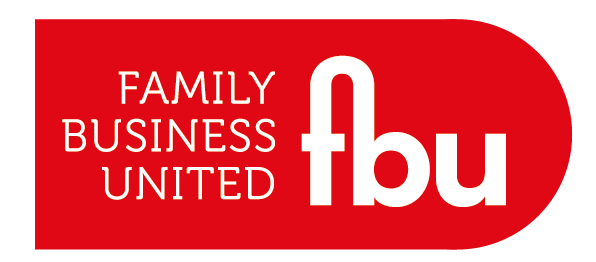Get in touch: nick.mayhew@alembicstrategy.com

Even though our clients are successful, don't believe for a minute this means everything always works. Success comes from the heap of expensive failures along the way.
We always start by being presented with one failure. Often, the managing director comes to see us to talk about a problem they have been aware of for some time, have perhaps tried to fix, and have failed to change.
I guess that inherent in reaching out for external advice is the realisation that they cannot fix it alone. The root of the problem is hidden, or, if the root is clear, the solution is hidden. It is always a good idea to talk more widely about the harder challenges. Although it might be seen as a vulnerability (and it is), this same vulnerability implies an openness and flexibility in approach that sets good leaders apart (IMHO).
I'll come back to that, but first here are my top five reasons, from my experience, for strategies to fail. I don't mind if you disagree, post back your own top five and let's compare notes.
- There is no strategy at all
Wait, what? No strategy? With all these strategic people around? Nope, there is no strategy. An easy way to check is to ask for a copy.
Wait, what? There isn't a copy? Ok, so how have you been tackling this? Conversations, over beer, some formal, an agenda item in the board meeting, etc.
A fundamental point about a strategy is that it exists beyond the leader, and the very first evidence this may be the case is that the leadership team has worked on it together and captured their thoughts and actions.
I don't care how strategic you think you are, if you struggle to create a genuinely agreed solution to a problem that requires wider organisational support, you're not; you're still learning. Get over it! Things are always on the move in strategy, so staying in learning mode is crucial.
- The strategy is not complete
Very occasionally there is a strategy that exists more widely than the managing director, but more often than not it is incomplete, capturing only parts and missing important elements. Here is a checklist (from our Change Success Model, developed by Chris Mason):
- Is the attitude of the key people in favour?
- For their significant others, is their attitude in favour?
- Is the change easy or hard?
- Do all the leaders know about and support the change?
- Have you all understood and agreed on why it's needed ?
- Have you all understood and agreed on what the gains will be?
- Is the method right?
- Is everyone confident in the change as proposed?
- Do you have the right people?
- Does the organisation have the strengths available to tackle this?
No, or not sure on any? It's incomplete. - Strategy as noun not verb
"We need a strategy!" says the director. "Let's get the team offsite and create one!" Great, now we are moving along. This implies a few important steps forwards:
- We are taking strategy out of the board meetings.
- We may be involving more people.
Too often, though, these meritorious initiatives turn into #groundhogday. Many are the times team members talk to us about losing interest in anything other than the social side (assuming they like that!) because the strategic discussion amongst the board or partnership rolls around the same issues as last year with limited progress and no real change.
(If your board meetings or away days are a bit #groundhogday, get in touch for a refresh!)
The error here is to see the strategic plan as "IT". In fact it is just the noun part of strategy. It's just the start, and without a "change engine" to hook up to the programme, this vehicle will stay in P, for Parked.
That "change engine" is going to be something different from what you normally do. It will involve people doing new things, consistently, and it may ultimately effect everyone.We realised that we needed 80% of the organisation to keep doing what they were currently doing well, while 20% got involved in creating the new business model and establishing how to make it work. Only then could we bring the others over and in stages. This was going to be two years work for us but it was essential to long term survival. (Council Chief Executive)
- Poor oversight
Here we start getting into what we call the "Accountability Chasm". A poorly used word, accountability is normally used to attack someone else. One of the most common causes for strategies to fail is there is no routine strategic change oversight at the right level.
It is obvious that a new way of organising ourselves will require the creation of and then adherence to new disciplines. If the board is not self-disciplined and proactive in monitoring and supporting this change, and does not create a well-timed routine for it, the strategy will wither and die.
The accountability chasm exists when there is no obvious place for our natural drive to be personally accountable to be received. - The leaders don't care
Wait, what? We don't care? Sure we do. We complain about this all the time! We even tried to solve it but it didn't work!
Yes. Exactly.
The leaders did care, but they did not care enough to take the risks needed to push through the barriers to the outcome.
Organisations that are great at change see barriers as opportunities to learn, and often create them when the market is not naturally presenting them. Because an edge in business, well, it's everything!
I said I would come back to vulnerability being a good thing in leaders. Why?
At the root of this is the idea that "I don't know the solution". Vulnerability implies an openness and flexibility that allows ideas to flourish in you and in your team. If the leader can be wrong, and it's not a bad thing, so can everyone else, and that just opens up communication in such a creative way that problem solving can be a pleasure.
If your strategy isn't working or if you need to achieve some change that is a challenge, and care enough about it to reach out, we are always happy to talk it over. We spend a lot of time up front before we offer to help, because starting in the wrong place, if there were a 6th reason for failure, would be my no. 6.
What are your top five?
Get in touch: nick.mayhew@alembicstrategy.com




